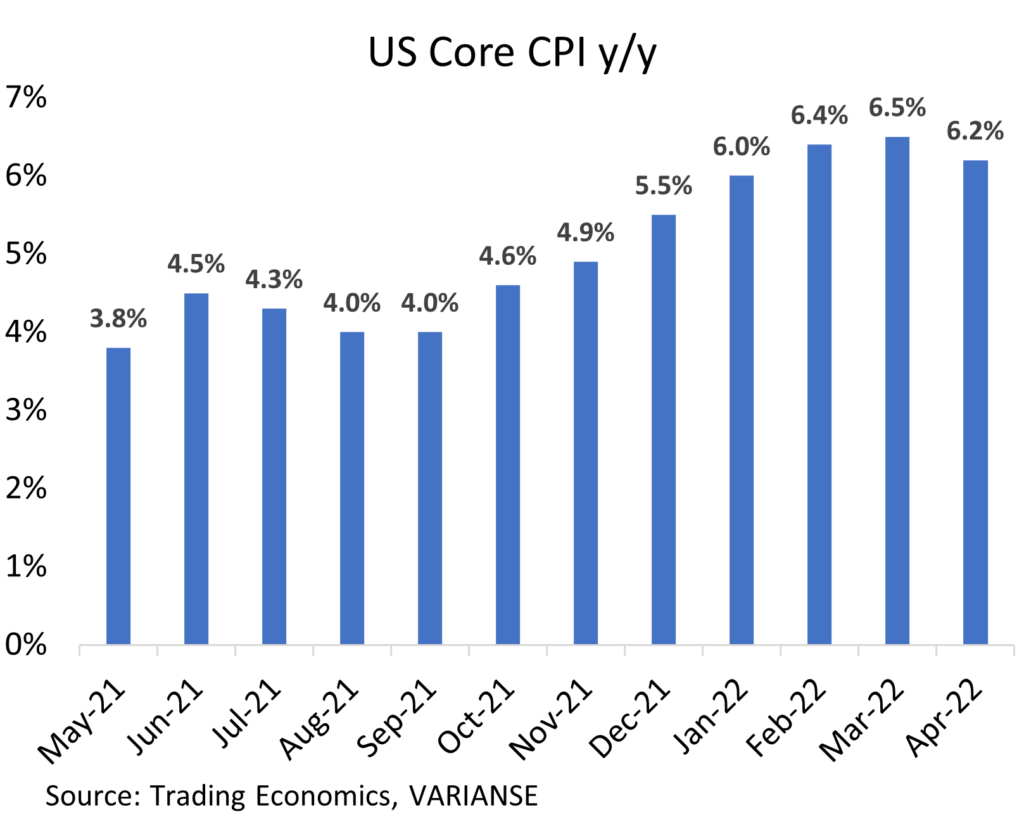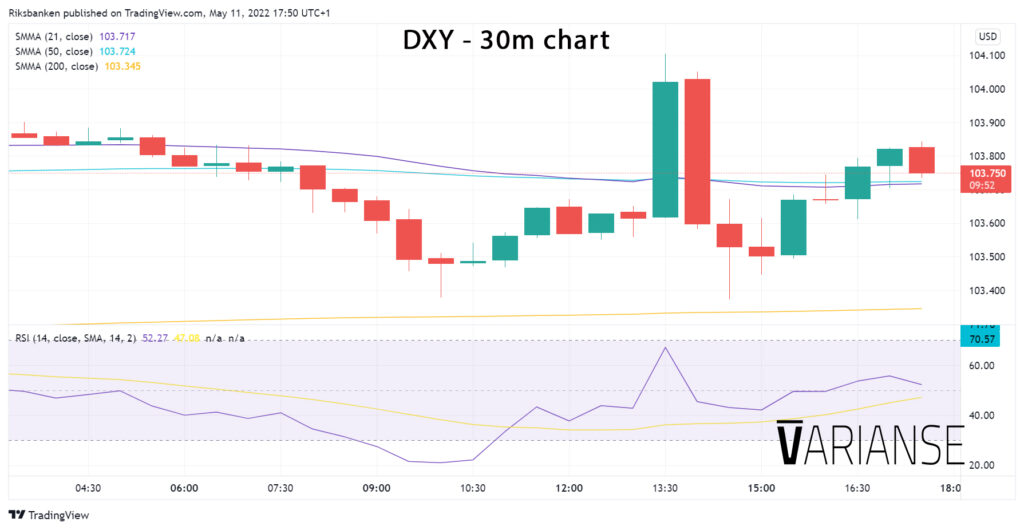Those who awaited the US April CPI data hoping for the summary execution of the inflation narrative walked away from Wednesday’s release disappointed. But the reality is that inflation, although falling, hasn't fallen at the rate most were expecting. For the time being, traders will need to balance both of those factors as they trade the US dollar.
Wednesday’s CPI data showed that inflation could at least fall on an annualized and monthly basis in one form or another. Headline CPI in April dropped to 8.3% from 8.5%, even though it was above the 8.1% economists were predicting. Likewise, the core inflation rate, which excludes food and energy prices, fell to 6.2% from 6.5% prior, missing expectations of a 6.0 % drop.
That, alongside expectations of further disinflationary pressures, points to a further drop in CPI as the year progresses. However, the unexpected degree of acceleration in both m/m figures undermines those expectations. Headline CPI accelerated by 0.6% m/m versus an expected 0.4% (prev. 1.2%), while the core figure rose by 0.6% m/m versus 0.4% (prev 0.3%).
Analysts, moreover, have been quick to point out that several components of CPI still point to underlying inflation worries. For one, services ex-energy component, rather than fall, rose by 0.7% m/m. In addition, rents rose by 0.5%, as did the owner’s equivalent rents. In fact, rents were one key reason why April’s core CPI rose by more than many expected.
Still, high inflation has been the market narrative for some time. The initial move higher in the DXY to today’s inflation data quickly responded to an above-consensus print. Meanwhile, the subsequent retracement in gains means there is some belief that inflation is falling, and Fed rate hiking expectations may be near their peak. The market is just waiting for the proof in the pudding.



